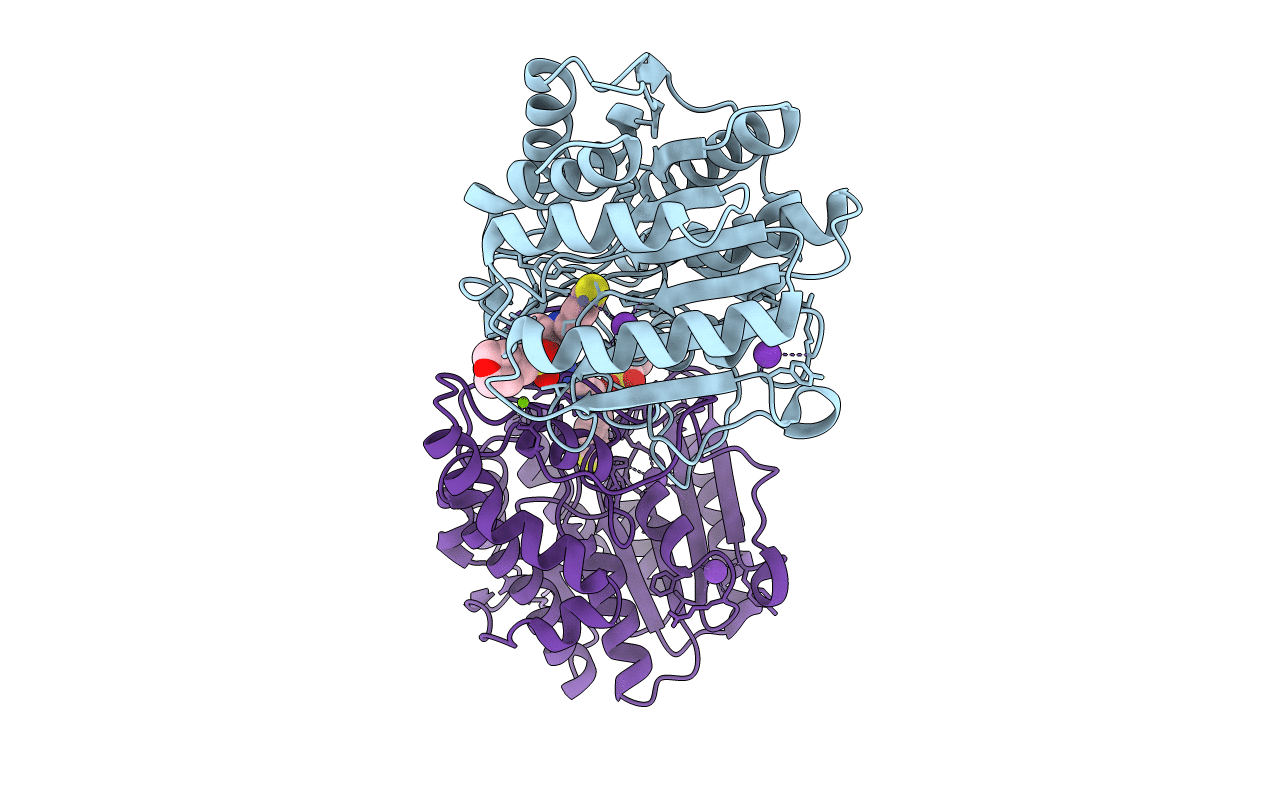
Deposition Date
2019-06-25
Release Date
2019-09-18
Last Version Date
2023-10-11
Entry Detail
PDB ID:
6PHR
Keywords:
Title:
Crystal structure of Marinobacter subterrani acetylpolyamine amidohydrolase (msAPAH) complexed with 5-[(3-aminopropyl)amino]pentane-1-thiol
Biological Source:
Source Organism:
Marinobacter subterrani (Taxon ID: 1658765)
Host Organism:
Method Details:
Experimental Method:
Resolution:
1.65 Å
R-Value Free:
0.20
R-Value Work:
0.17
R-Value Observed:
0.18
Space Group:
P 1 21 1


